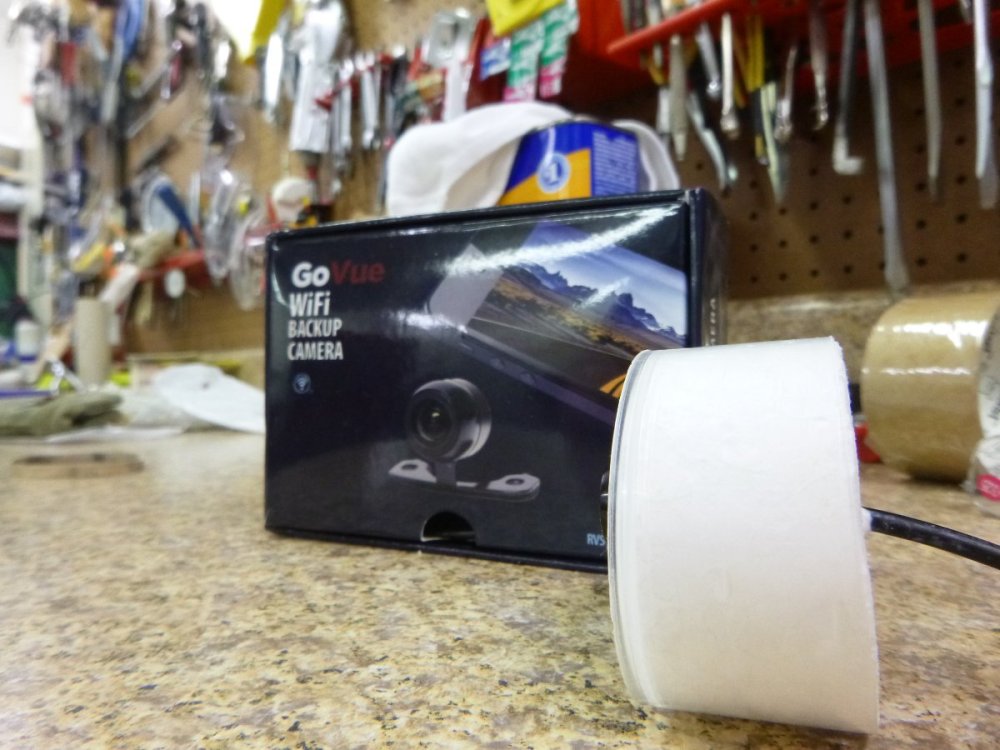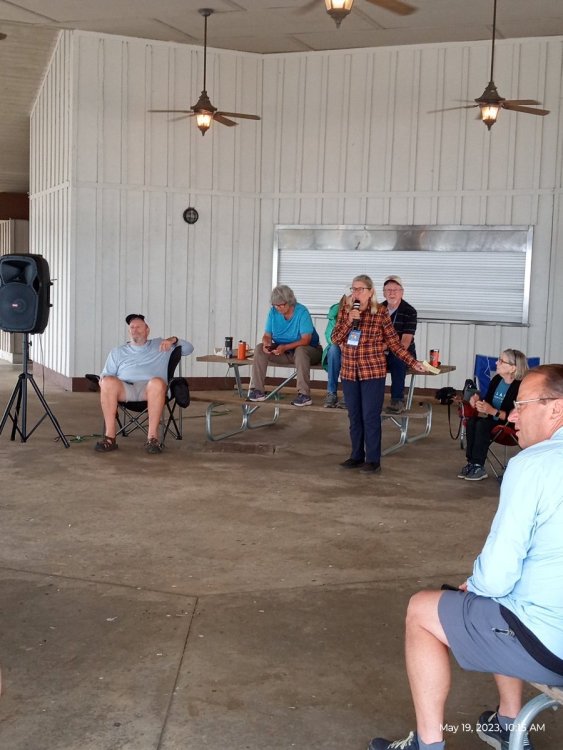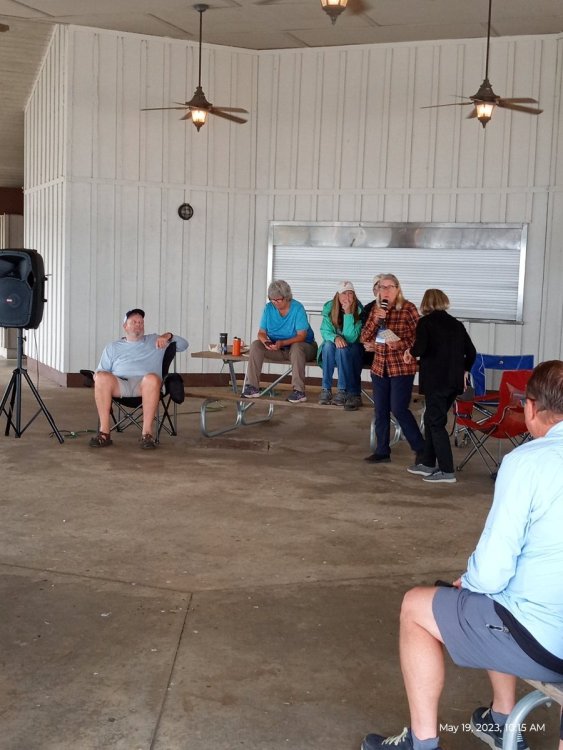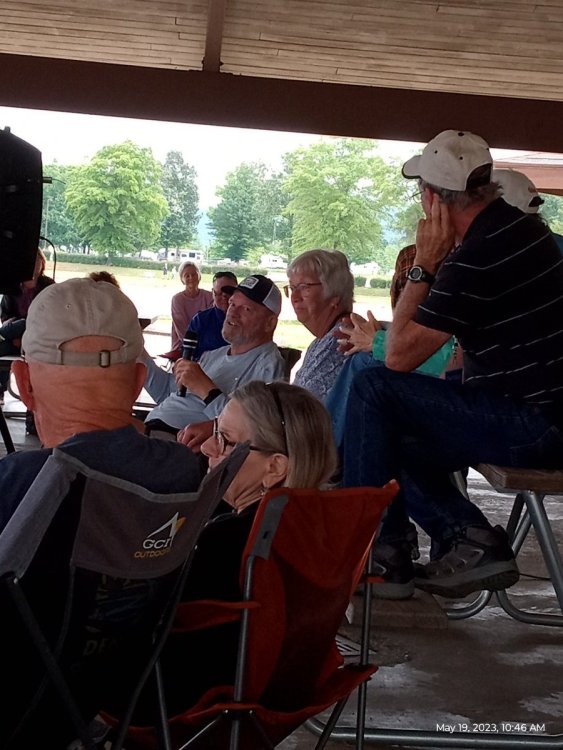-
Posts
7,343 -
Joined
-
Last visited
-
Days Won
431
Everything posted by topgun2
-
You can get an idea of the diming effect by looking at the pics and video at the Amazon link provided above. Bill
-
I think that you are on the correct road with this one. Did Oliver send you just he 12 volt outlet or a combination 12 volt and USB? Your comment about disconnecting the adjacent USB is a big clue I think. God luck! Bill
-
Wal Mart for certain and possibly Amazon.
-
The rumor is that this same tactic was employed in reserving sites for next year's Oliver Owner's Rally. Very disappointing if the rumor is true.😒 Bill
-

Backup Camera Location
topgun2 replied to Wandering Sagebrush's topic in Mechanical & Technical Tips
I didn't use this type of camera mount because the camera is within reach of passersby. That means that anyone can tamper with it and/or can get "snagged" on it with clothing and/or other things. Bill -

Backup Camera Location
topgun2 replied to Wandering Sagebrush's topic in Mechanical & Technical Tips
Yes - my first rear camera was/is located in the spare tire cover. There are a couple of issues - mounting and rainy weather. Mounting - the spare tire cover is not perpendicular to the ground. Actually it is off by 6 degrees. So if you mount the camera without making any adjustments to account for this, the camera will be pointing too far down towards the road. If you compensate for the entire 6 degrees you will probably find that the camera is now pointing too high. I made a "puck" out of a material called Delran (similar to nylon) that is easy to work with and cut it at a 4 degree angle. Thus when mounted on the tire cover you obtain a net 2 degree downward view which is about perfect. The second issue is rain. With the camera mounted in this relatively low position (versus the "normal" roof mount), the camera gets more road spray in wet weather. However, when it is not raining the I prefer this lower view for backing into campsites. A third issue with the lower mounting position is in heavy traffic you can not see as far behind you because the guy on your bumper blocks most if not all of the view. Given the above - I now have two rear cameras. -
Strainer - stopper What ever! You da man! waste not, want not.
-
And - now you can use that lid as a strainer!😇
-
Yes, not using the auto-change over feature does have its negative side(s). That first propane bottle always seems to know when to be empty - when it is raining, when it is 3am, when you are right in the middle of cooking that expensive steak for friends, when its cold, etc.. However, the biggest problem is when you do not remember to get that first tank refilled prior to running out of propane in the second tank.😉
-
Certainly this seems to offer a bunch of options. But, at $200 I'm not so sure that I really need the most of the options that are offered. Please update your review over time to see how well this unit performs. Bill
- 1 reply
-
- 1
-

-
ScubaRx is your friend on this subject!
-
"Old School" isn't necessarily a bad thing - it works for me too. Not too sure about the school part - but - I'm certainly old!😁
-

Cricket noises from the lights
topgun2 replied to Going Coastal's topic in Mechanical & Technical Tips
Is yours as dusty/dirty as Coastal's? That dust and resultant heat generated due to the "blanket" it is always wearing can cause premature failure. Bill -

Black Tank Flush Backflow Valve
topgun2 replied to Mike and Carol's topic in Mechanical & Technical Tips
Gee! I wonder what words were said when this happened?😁 -
Yet another example of OTT Service stepping up and doing the right thing. Simply can't get any better than that. Bill
-

Black Tank Flush Backflow Valve
topgun2 replied to Mike and Carol's topic in Mechanical & Technical Tips
O' ye of little faith! 😁 -

Removing interior odors/smells
topgun2 replied to Going Coastal's topic in Mechanical & Technical Tips
Depending on the levels of humidity during storage and the possible lack of air movement it is possible that there could be some minor mold issues between the shells. However, there is nothing between the shells that could harbor or be very conducive to mold growth. If it were mine - I'd inspect the areas between the shell that you can see. If there is any sign of mold then I would wipe those areas with diluted bleach or vinegar and air it out by blowing air into any of the hatches. Good luck! Bill -
US Army - '67-'69 Memorial Day never meant much to me until I was in the Army. Luckily, my service was entirely in the US. But seeing those that came home from Vietnam plus all those that didn't and the way we were all treated gave me a totally new outlook on this very special day. Indeed - the cost of freedom is high, but, worth every penny. Bill
- 7 replies
-
- 10
-

-

-

-

Alaska Touring Discussion Lake Guntersville Rally 2023
topgun2 replied to LoriGuzi's topic in Events & Rallies
-
Rumor and rumor only - 2024 Olivers will see a return to normally operated lights (i.e. via a switch versus being "touch" lights). Bill
-
OUCH!
-
Sounds to me like your mobile RV guy is correct - there still could be a short or loose connection that is causing the on again off again operation. You certainly don't want to continue guessing if it will work or not. I'd still have it thoroughly checked out - these things simply don't turn themselves on/off for no reason. Bill
-
I agree! When I first heard that Toyota was updating the "new" Tundra, I was all but sold. However, all they did was do away with the V8 and power the 1/2 ton with basically the same engine that Ford has had since 2011. And, the payload is a few hundred pounds less than Ford's. I really don't understand the logic. Toyota certainly blew another chance at my business. Makes me sad and I feel a bit dumb that I can't seem to figure out why they did what they did. Bill
-

Where are the "Like Emoji's"?
topgun2 replied to John Dorrer's topic in How to Join and Use Oliver Travel Trailer Forums
"Hover" your cursor over the "thank you" button until a panel slides out to the left. Then move your cursor over the button you'd like to hit and left click. If you would rather make another choice then you can always left click the little "x" above your choice and then repeat the steps above to make another choice. Bill










